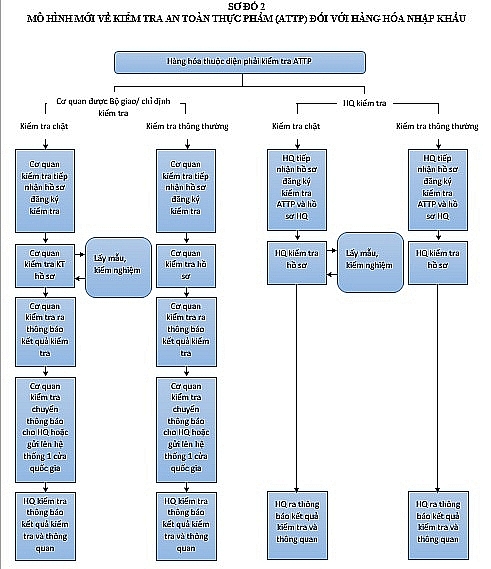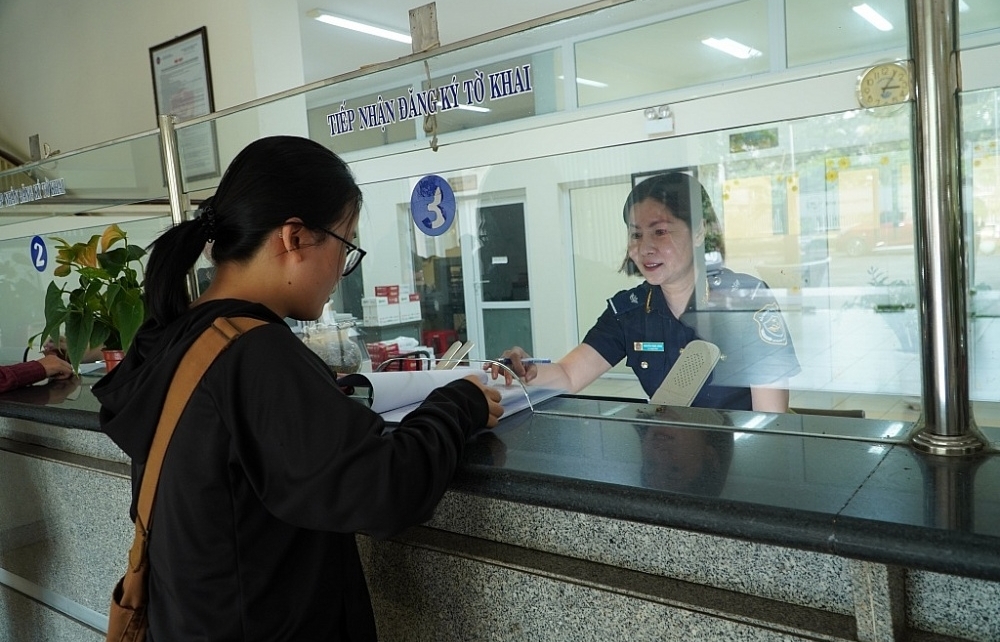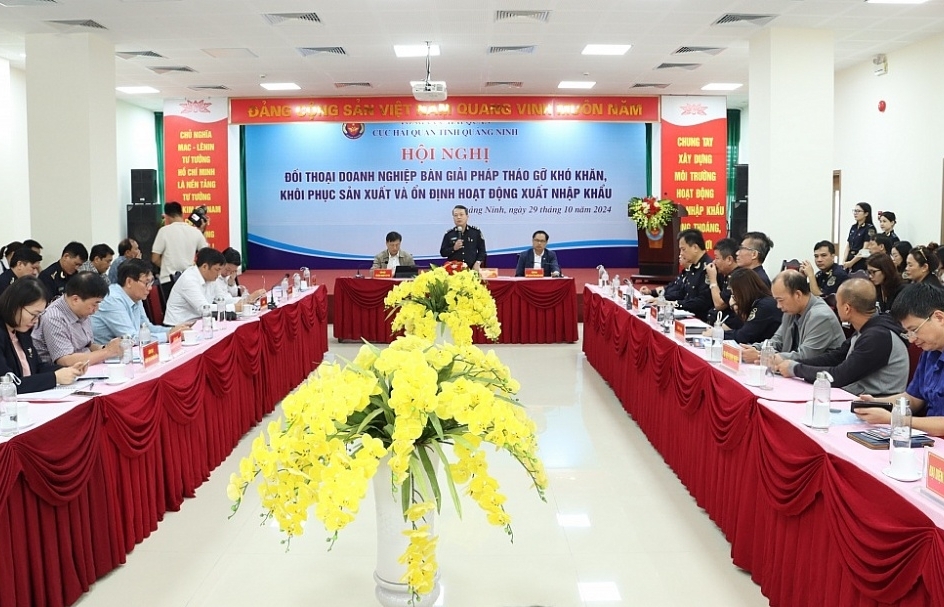Reforming model of specialised inspection: Cutting procedures when Customs is the focal point
 |
Applying three methods of descending inspection
Similar to the quality control model, imported goods subject to food safety inspection are also implemented via three methods: tightened inspection; ordinary inspection; and descending inspection.
For tightened inspection, applying to goods in one of the following cases: goods that fail to meet import requirements at the previous inspection; unsatisfactory goods in the inspection or examination (if any); there are warnings from the Ministry of Health, the Ministry of Agriculture and Rural Development, the Ministry of Industry and Trade, the People's Committee of the province or the authority of the foreign country or the manufacturer.
With ordinary inspections, applying to goods in one of the following cases: not subject to tight inspection and descending inspection; having three consecutive times in 12 months meeting import requirements under the tight inspection method.
Regarding the method for descending inspection, applying to goods in one of the following cases: being confirmed to meet food safety requirements by an agency or organisation of the country that has signed a mutual recognised treaty in food safety inspection in which Vietnam is a member; having the results of inspection by the competent agency of the exporting country for the consignment or goods in accordance with the provisions of Vietnamese law; having three consecutive times within 12 months meeting the requirement for import under the normal inspection method; or being produced in establishments applying one of the quality management systems GMP, HACCP, ISO 22000, IFS, BRC, FSSC 22000 or equivalent.
According to Decision 38/QD-TTg, the application of the inspection method and conversion of inspection method (from tight to ordinary, from ordinary to descend) is for identical goods, regardless of importers. The conversion of inspection method is applicable for a certain period of time.
A new feature of the new model is the selection of an inspection agency. Imported goods subject to food safety inspection are inspected at State inspection agencies for imported food assigned by the Ministry of Health, the Ministry of Industry and Trade, the Ministry of Agriculture (hereinafter referred to as assigned/designated agency) and the Customs office.
The assigned/designated agency will carry out food safety inspection for imported goods subject to tightened inspection and ordinary inspection. For imported goods subject to tightened inspection, the assigned/designated agency to carry out food safety inspection in the order and procedures is as follows: receiving registration dossiers for food safety inspection; checking records; sampling and testing food safety norms; issuing notices of food safety inspection results and transferring food safety inspection results to the Customs offices for customs clearance.
For import goods subject to normal inspection, the assigned/designated agency to carry out food safety inspection according to the order and procedures as follows: receiving the registration documents for safety inspection food; inspecting food safety records; issuing notices of food safety inspection results and transferring food safety inspection results to the Customs offices for customs clearance.
Reducing costs and time when done at the Customs office
The benefits of the new model are evident when the Customs office carries out food safety inspections on import goods. Specifically, Customs authorities inspect food safety for imported goods subject to tight inspection, ordinary inspection and descending inspection. For imported goods subject to tightened inspection, the Customs office will carry out food safety inspection according to the order and procedures including: receiving registration dossiers for food safety inspection; checking records; requesting certification/inspection organisations or units and organisations of the agencies assigned/ designated by Ministries to take samples and test food safety indicators (this agency/organisation is selected by the enterprise and notified to the Customs office); noticing food safety inspection results and carrying out the customs clearance.
For imported goods subject to ordinary inspection, the Customs office will carry out food safety inspection according to the following order and procedures: receiving registration dossiers for food safety inspection; inspecting food safety records; issuing food safety inspection results and carrying out the customs clearance.
For import goods subject to descending inspection, the Customs office shall carry out food safety inspection according to the following order and procedures: receiving registration dossiers for food safety inspection; inspecting random document up to 5% of the total number of imported consignments subject to reduced inspection within 12 months; issuing food safety inspection results and carrying out customs clearance.
According to the scheme, order and procedures for food safety inspection according to the ordinary method of inspection, the Customs office cuts two steps of procedures compared to management ministries, including the enterprise receives the notification of food safety inspection results from the agency assigned/designated by the ministry and the enterprise submits the results of food safety inspection by the agency assigned/designated by the ministry to Customs for import procedures.
According to the new model, enterprises only have to register for food safety inspection with Customs and carry out customs clearance for goods if the goods meet food safety requirements. Enterprises do not have to travel between the agency assigned/designated by the ministry and the Customs office, reducing costs and time for them.
Related News

Growth of customs broker agents: Ongoing obstacles
11:25 | 26/10/2024 Customs

What are the secrets to customs brokers' success?
11:32 | 27/10/2024 Customs

Solutions for developing customs broker agents in the new context
10:55 | 12/10/2024 Customs

Food safety rules relaxed for emergency imports
10:58 | 12/10/2024 Regulations
Latest News

Director of Dong Nai Customs engages monthly with enterprises
08:59 | 05/11/2024 Customs

Ha Nam Ninh Customs gathers feedback from the business community
09:55 | 04/11/2024 Customs

Facilitating trade and bolstering customs enforcement at Vinh Xuong border crossing
07:14 | 03/11/2024 Customs

3 items have a big impact on the budget revenue of Ho Chi Minh City Customs
19:38 | 02/11/2024 Customs
More News

Quang Ninh Customs collects 85.75% of the budget revenue through the seaport area
19:37 | 02/11/2024 Customs

Regulating goods across Huu Nghi International Border Gate during peak times
19:37 | 02/11/2024 Customs

Kien Giang Customs’ revenue reaches over 190% of target
10:36 | 02/11/2024 Customs

Quang Ninh Customs seeks solutions to promote import and export
10:34 | 02/11/2024 Customs

Businesses get a fair hearing under Customs' new 'three no' rule
09:31 | 31/10/2024 Customs

Khanh Hoa Customs reaches revenue target 1 quarter early
09:29 | 31/10/2024 Customs

WCO Permanent Technical Committee Meeting in Belgium: The managerial mark of the Vietnamese customs representative
09:29 | 31/10/2024 Customs

Revise regulations on implementing administrative procedures under the National Single Window
09:28 | 31/10/2024 Customs

Launch of the “Proud of 80 years of construction and development of Vietnam Customs” contest
09:08 | 30/10/2024 Customs
Your care

Director of Dong Nai Customs engages monthly with enterprises
08:59 | 05/11/2024 Customs

Ha Nam Ninh Customs gathers feedback from the business community
09:55 | 04/11/2024 Customs

Facilitating trade and bolstering customs enforcement at Vinh Xuong border crossing
07:14 | 03/11/2024 Customs

3 items have a big impact on the budget revenue of Ho Chi Minh City Customs
19:38 | 02/11/2024 Customs

Quang Ninh Customs collects 85.75% of the budget revenue through the seaport area
19:37 | 02/11/2024 Customs




